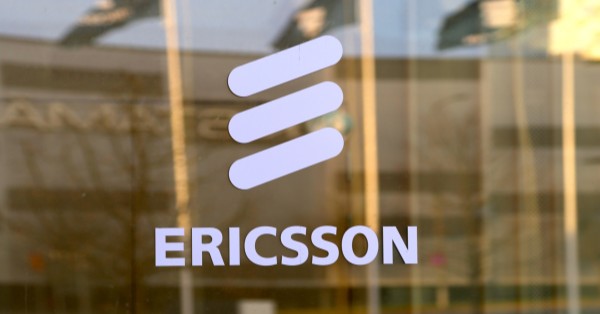As the global telecom industry accelerates toward the future, 2025 stands as a pivotal year—where innovation in AI, 5G, and emerging 6G technology converges with sustainability, policy, and market expansion. From chip-level breakthroughs to hyperscale data centers and AI-native cellular architectures, the sector is navigating transformative shifts across every layer of infrastructure and service delivery.
At BHARAT TELECOM 2025, thought leaders like Niral Networks are at the forefront, championing open, intelligent, and secure network transformation tailored for India’s digital evolution. In parallel, international developments—from AI-enhanced spectrum utilization to eSIM standardization—paint a clear picture: telecom is no longer just about connectivity. It’s about intelligent, sovereign, and sustainable infrastructure.
AI Reshapes Cellular Networks: From Mobile Data to Mobile Intelligence
Artificial Intelligence is fundamentally reshaping cellular networks. As highlighted by RCR Wireless, we’re entering the “Mobile AI Era,” surpassing the traditional Mobile Data Era. The advent of ELAA (Extremely Large Aperture Arrays) represents a transformative shift—unlocking previously untapped spectral efficiency and spatial precision. AI is the driving force behind this evolution, managing complexity at scale, adapting in real time, and enabling ultra-reliable low-latency services (URLLC).
These intelligent RAN systems, enhanced by ELAA and AI, allow operators to better exploit available spectrum and serve higher-density, high-demand environments such as smart cities, autonomous transportation, and industrial IoT deployments.
6G and the Strategic Leap Beyond 5G
While 5G adoption continues globally, eyes are now turning to 6G—a future network poised to be AI-native, ultra-open, and deeply integrated with immersive technologies such as extended reality (XR), digital twins, and tactile internet.
According to TeckNexus, the transition to 6G demands industry-wide collaboration, particularly through open-source platforms and interoperability standards. With 6G expected to operate across both sub-THz and lower-band spectrums, initiatives like the 6G Foundry are focused on refreshing lower-band spectrum design to support high availability, coverage, and energy efficiency.
The result? A network architecture optimized not just for throughput, but for cognitive, adaptive intelligence—ready to serve emerging use cases we are only beginning to imagine.
AI Fuels Cloud Growth—and Telecom is Following
As AI workloads grow, the cloud is scaling rapidly to meet demand. Telecoms.com reports that Q1 2025 saw a 23% year-over-year increase in global enterprise spending on cloud infrastructure, reaching $94 billion. AI applications—from generative models to network analytics—are pushing demand for more flexible, high-performance compute and storage solutions.
For telecom operators, this translates into deeper cloud-native integrations and edge computing strategies, as they seek to process data closer to the source for real-time responsiveness. The rise of GPU-powered hyperscale data centers, such as PLDT’s VITRO Sta. Rosa facility in the Philippines, is one response to these pressures—purpose-built for AI, sustainability, and regional digital leadership.
India’s Telecom Modernization: Phased 5G and Sovereign Data Strategy
India continues to carve a unique path in telecom modernization. BSNL’s 5G strategy, as outlined by Telecom Minister Jyotiraditya Scindia, emphasizes stabilizing a robust 4G foundation—deploying 100,000 towers—before switching to 5G. This phased approach ensures infrastructure maturity, quality of service, and long-term viability.
Simultaneously, the Indian government is stepping up data sovereignty. New directives enforce legal interception of satellite communications and prohibit overseas data routing—underscoring the country’s focus on national security and domestic data processing.
In this environment, companies like Niral Networks, which specialize in private 5G and sovereign cloud-native network solutions, are emerging as critical enablers of India’s digital autonomy.
Ambient IoT and Energy-Aware Networks
One of the most exciting innovations in telecom infrastructure is the proliferation of ambient IoT devices—small sensors powered entirely by environmental energy sources. According to ABI Research, shipments of these devices are projected to exceed 1.1 billion annually by 2030, with over half powered by light via photovoltaic (PV) cells.
These energy-autonomous devices will play a crucial role in smart infrastructure, agriculture, logistics, and environmental monitoring. Telecom networks must be redesigned to support ultra-low power, high-density device ecosystems, enabled by AI at the edge and cloud platforms at the core.
Telenor IoT and the Next-Gen eSIM Standard
Scalability in IoT also hinges on SIM lifecycle management. Telenor IoT’s early adoption of the GSMA SGP.32 eSIM standard is a step toward simplifying global device provisioning. This move enhances interoperability, automates credential management, and makes large-scale deployments more agile.
Such future-proofed frameworks are essential in an era where devices must seamlessly switch networks, comply with local regulations, and adapt to evolving business models—all without human intervention.
Conclusion: A New Telecom Paradigm Emerges
In 2025, telecom is being redefined—by AI, cloud, spectrum innovation, and policy shifts. It’s no longer just about faster networks; it’s about intelligent connectivity, sovereign control, and sustainable architecture.
Events like BHARAT TELECOM 2025 spotlight the critical role of Indian telecom innovators like Niral Networks, who are enabling secure, software-driven, and open solutions tailored to the nation’s needs. Internationally, the move to 6G, the explosion of ambient IoT, and cloud-AI convergence signal a global shift toward a new kind of network: decentralized, autonomous, and intelligent by design.
The road ahead will demand collaboration, standards, and foresight. Those who embrace open ecosystems and AI-first thinking will lead the next chapter of connectivity.



























